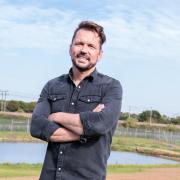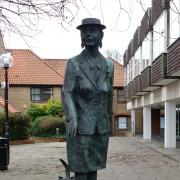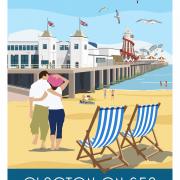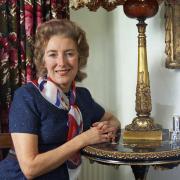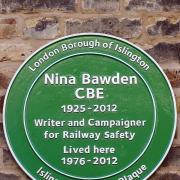1066 is a year we can all recall from our history lessons at school. 950 years since this momentous period in our nation’s past, Adam Jones profiles how the Normans changed the landscape of our county forever

Imagine, it’s October 13, 1066, and you are a humble ploughman tilling your field while pigs rootle for windfall apples in the nearby orchard. Little was the average Anglo-Saxon aware that, barely 24 hours later, their life would be transformed – if not cut brutally short – by a man whom they would come to simply call William the Conqueror. The aftermath of those blood-soaked, harrowing hours in a Sussex meadow almost 1,000 years ago not only shaped the nation’s political and cultural landscape, but also left an indelible mark on Essex.
That transformation was not immediate, but within 20 years of William’s victory at Hastings, the Anglo-Saxon nobility had not only been completely dispossessed by the Normans, but replaced. Ironically, for a warlike culture descended from Vikings, the Normans demonstrated a certain sensitivity to place names. They often changed a village or town’s name to make it easier for them to pronounce, or simply because they didn’t like the original. They also disliked saying the letter ‘S’, so Snotingaham (the settlement of Snot) simply became Nottingham. Here in Essex, the residents of Fulepet (Filthy Hole) were perhaps grateful for the Normans changing it to Beaumont (Fair Hill).
A further consequence of William gifting English lands to his followers was that many places then assumed the name of the Norman owners. The Peverel in Hatfield Peverel refers to Ranulph de Peverel. Similarly, what was simply recorded as Udeham in the Little Domesday Book, acquired the latter part of Henry de Ferrers’ name, giving us Woodham Ferrers.

It wasn’t just the names of land and villages that the Normans changed. They also began to influence what we called one another. William, Richard and Robert replaced Ethelred and Godwin as first names, while their surnames became Anglicised as successive generations showed that the Normans had become our neighbours, not just our conquerors.
If you are a Warren, you could be a descendant of Guillaume de Warenne. Other surnames that we think of as quintessentially English, such as Morton, Gifford and Piggott, derive from Robert de Mortain, Walter Giffard (William’s standard bearer) and Cil de Saie who also went under the name of Picot de Saye.
However, it wasn’t just the aristocracy who influenced our names. The Normans were highly organised when they arrived on the beach at Pevensey Bay, bringing with them flat-pack defensive structures and siege engines. Naturally, these required skilled engineers, or engineors. Over the centuries this became the popular surname, Jenner. Appropriately, it translates from the Old French as ‘ingenious’.

As an invading army, with their backs to the Channel, the Normans knew that they had to head north. With each phase of the conquest, they built defensive motte and bailey structures, to create a local stronghold. Stone was used for its most important redoubts, royal castles and churches. They were great builders, constructing around 500 castles alone. Many, such as the ones at Pleshey and Rayleigh, no longer exist, but in Hedingham and Colchester we have two of the finest stone Norman castles in Britain and at Stansted Mountfitchet you’ll find a unique, award-winning recreation of a wooden motte and bailey, complete with authentic medieval village.
Robert Gernon, or ‘Greno’ according to the Domesday Book, attacked the Saxon settlement and was gifted the lordship of Stansteda by a grateful William – also believed to be a relative. Gernon initially built a wooden motte and bailey before a stone castle was begun.
This was largely destroyed when King John besieged the castle and laid waste to it. In the 1980s, the site’s owner realised a long-held dream to restore the grounds and recreate a historically accurate motte and bailey. Visitors today can enjoy an immersive experience as they wander around the castle and village, roaming in and out of the many dwellings, meeting the fallow dear and witnessing first-hand what life was like 900 years ago.

Hedingham Castle was begun in the 1130s by Aubrey de Vere II. The magnificent keep is the best preserved Norman example in England, having been sensitively and painstakingly restored by its owners, the Lindsay family. Remarkably, Jason Lindsay is a direct descendant of the first Aubrey de Vere, who fought with William at Hastings.
Although constructed to be every inch a defensive and imposing structure, the fact that it was started some 60 years after the Battle of Hastings suggests it was intended to convey the de Vere’s high-ranking status. They later became known as Earls of Oxford but maintained their familial base in Essex.
Like the Romans before them, the Normans were quick to recognise the strategic importance of Colchester and so invested a great deal of their skills in the construction in this, the third of William’s three royal castles. Significantly, it was begun in 1066 on the foundations of the Roman temple of Claudius and used some of the existing stonework, showing both Gallic pragmatism and the sense that they wanted to build it quickly.

Nevertheless, Colchester was the largest Norman keep in Europe, highlighting the architectural treasure we have in the county. Both Hedingham and Colchester are wonderful examples of the culture shock delivered to the English – a society for whom castles were completely unknown – and thus a further indication of their subjugation.
Much as they built for war, the Normans also built for God. William famously built Battle Abbey on the spot where Harold was slain, but took some persuading to allow his rival’s mutilated body to be removed from the battlefield and interred in Essex. Prior to his coronation as King, Harold had been the Earl of Essex with estates in Waltham and Nazeing and endowed the already existing church in Waltham with grander embellishments, including a college.
In perhaps typical Norman fashion, Harold’s church was demolished and a new church begun in 1090, following the French style. For poor Harold, the final insult was the use of stone brought from Caen to complete the new church. Other fine examples of the Normans’ flair for ecclesiastical construction can be enjoyed by exploring St Botolph’s Priory (founded in 1100) in Colchester and Copford Church. Be prepared to have your breath taken away as you step inside this charming building, featuring a semi-circular apse. The interior is decorated with a series of wall paintings. Believed to be painted by Master Hugo, who worked at Bury St Edmunds during the 1130s, Copford’s frescoes were created during a similar period, when the church was built.
While we may have shared a common belief in God, there were few other similarities. English men traditionally wore their hair long and had full beards, while the Normans preferred close-cropped hair and were clean shaven. They drank wine and so reintroduced the Roman practice of viticulture, and in doing so effectively killed off the Anglo-Saxon concept of the mead hall until we finally dreamt up the concept of pubs.
Crucially and most obviously, they spoke French. For once, it was the English who had to quickly master the new language of power and concept of courtly behaviour. French eclipsed Old English and prompted a simplification of what words did remain, while creating an incredible and seismic enrichment of our language.
Thousands of new words and idioms entered what became English. Surely, the greatest irony is that the French refer to us as ‘les ros bifs’ but actually gave us the word beef via boeuf. As food brings people together, it is unsurprising that we now use words such as pork, veal and mutton and understand that someone is hungry (English) if they claim to be famished. When romance blossomed, a chivalrous Norman would demonstrate that he is amorous (French) to his loving (English) bride to be.
That around 14 Norman nobles would be rewarded by William the Conqueror with vast tracts of Essex and these wine-drinking, French-speaking, castle-building people would ultimately become part of the warp and weft of everyday life 950 years later is just cause for celebration – even nearly a millennium hence.




